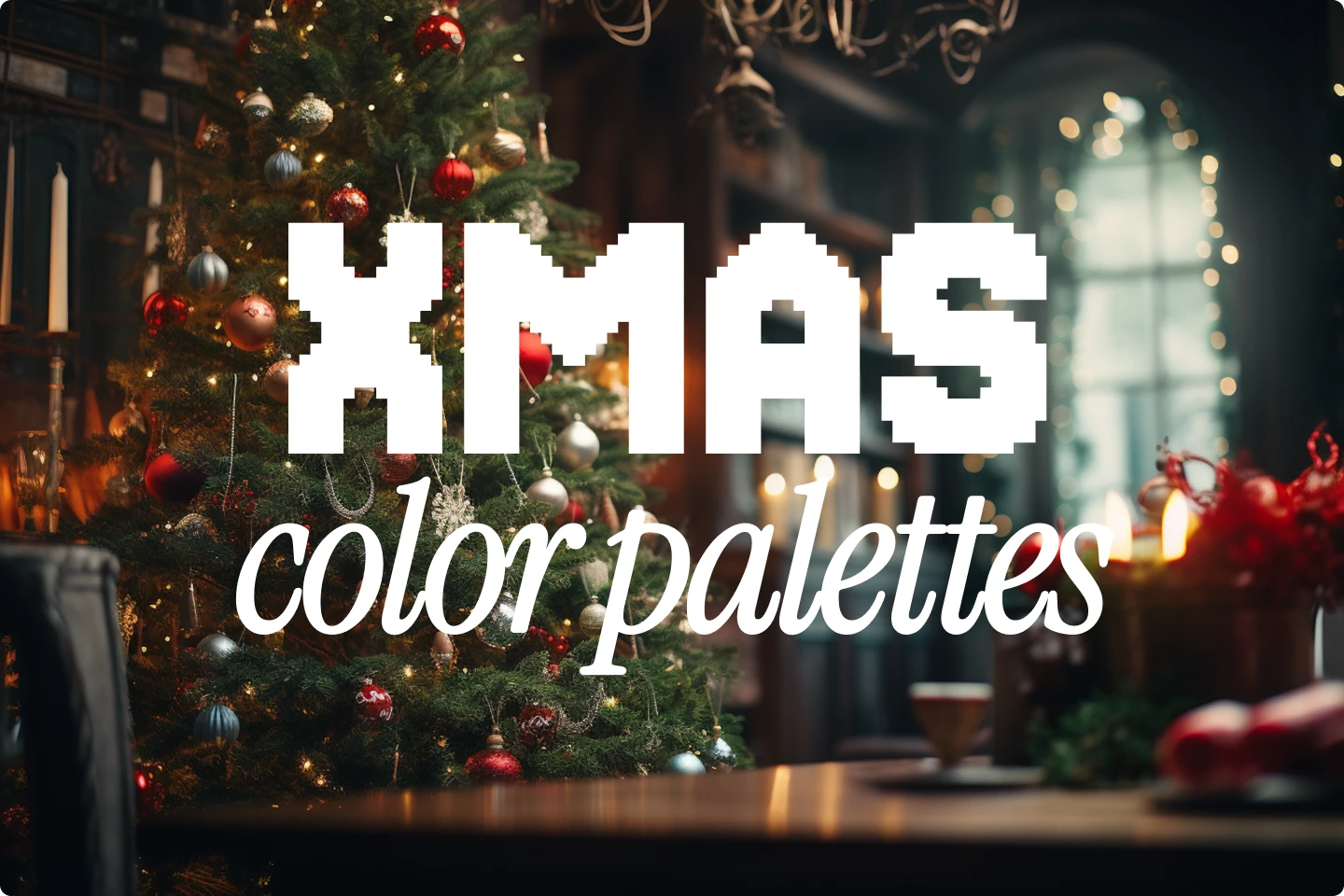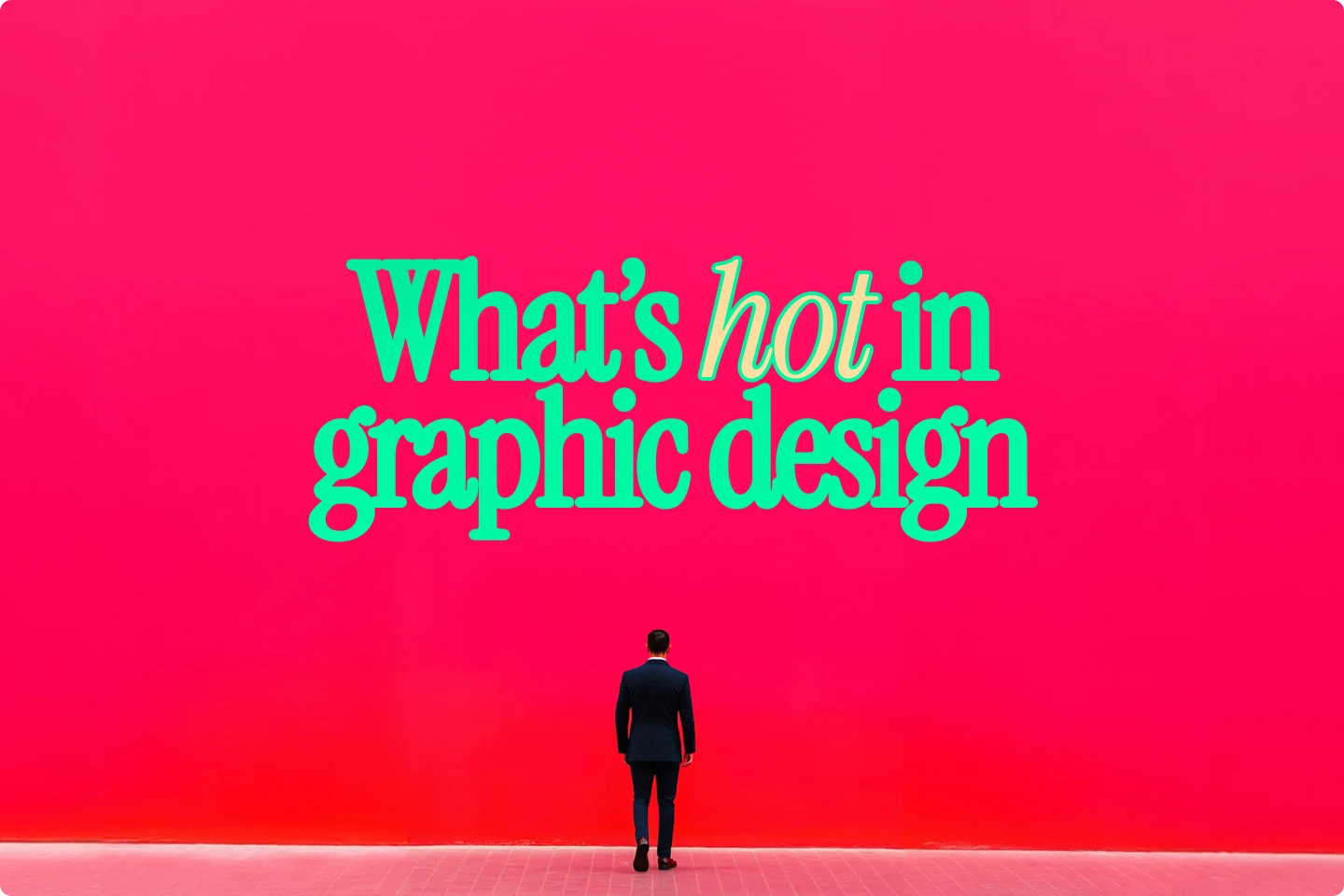Font trends for 2025 that creatives should keep in mind


More design trends to keep you ahead of the curve.
Typography trends shape the visual language of each era, reflecting cultural shifts, innovations, and design philosophies. For designers, staying updated on trending fonts isn’t just about aesthetics—it’s about creating work that resonates with audiences today.
As we look ahead to 2025, we see bold choices, nostalgic revivals, and fresh experiments in type that bring personality to every design. The right font can set the tone, build trust, make images pop, or create an unforgettable brand presence. So, what fonts are trending, and how can you use these trends to elevate your creative projects?
In this guide, we’ll explore nine font trends for 2025 that creatives should be keeping on their radar. These trends range from retro-inspired fonts to modern, experimental forms. Each trend offers something unique, giving designers the tools to communicate style, emotion, and authenticity in new ways.
Whether you’re working on creating branding identities, web design, or graphic design, these typefaces can help you create work that stands out, keeps up with design trends, and captures your audiences' attention.
1. The retro comeback
The pull of retro-inspired fonts remains strong in 2025, with typefaces from the 70s, 80s, and even early 2000s reemerging. Think bold, expressive forms that add a touch vintage vibes.
These fonts often incorporate characteristics like rounded edges, thick lines, and playful shapes reminiscent of earlier design eras. Y2K-inspired fonts and bitmapped aesthetics, once at the height of early digital design, are officially retro now.
Why it’s trending
Retro fonts tap into a collective memory, offering a sense of warmth, familiarity, and character. They bring something memorable to a brand or project, and they stand out precisely because they feel like a throwback.
With people craving authenticity and unique expression, retro fonts offer a way to make a brand feel more grounded or even sentimental.
How to use it
These fonts work well for branding projects that want to evoke personality or charm, packaging design, and even website headers where a memorable first impression matters.
While you don’t want to overwhelm a design with retro elements, pairing a retro font with modern layouts or muted colors can create a balanced look.
Some of our favorites
2. Heritage-inspired fonts
Fonts inspired by cultural heritage and traditional design motifs are trending as designers look to add depth and meaning to their projects. These typefaces draw on everything from historical scripts to intricate patterns and flourishes that reflect specific cultures or eras.
Heritage fonts can range from art deco styles to traditional calligraphy, each offering a unique story.
Why they're trending
Designers and audiences alike are seeking more meaningful, story-driven aesthetics. Heritage-inspired fonts introduce a cultural or historical element, connecting viewers with something beyond a simple visual appeal.
These typefaces allow designers to convey trust, legacy, and authenticity, giving each project a distinctive voice.
How to use them
These fonts work well in projects where storytelling is essential—think branding for heritage brands, websites for cultural institutions, or even luxury eCommerce.
When combined with minimalistic design elements, these typefaces can communicate a sense of tradition while remaining fresh and relevant.
Some of our favorites
3. Pushing the boundaries with experimental fonts
In 2025, designers continue to experiment with typography, embracing typefaces that push the boundaries of readability and form. Experimental typography incorporates elements like stretched letters, liquid forms, distorted effects, and unconventional pairings.
This trend challenges traditional notions of readability in favor of expressiveness and out of the box modern design.
Why they're trending
As digital and brand spaces become more saturated, designers are turning to experimental fonts to make a statement. Typography has always been more than just legibility—it’s a chance to convey mood and character. By using experimental fonts, creatives can add a layer of personality that conventional typefaces may lack.
How to use them
Experimental fonts work best in contexts where grabbing attention is the goal, like website headers, social media graphics, and promotional campaigns. These typefaces can serve as eye-catching headers or stand-alone elements in a design. However, balance is key; pair these fonts with more traditional ones for body text or secondary information to maintain legibility and accessibility.
Some of our favorites
4. Handcrafted and organic fonts
Handcrafted or organic fonts have gained popularity for their authentic, personal feel. These typefaces mimic the imperfections of hand-drawn or brush-written forms, offering a refreshing contrast to the polished digital aesthetics we’ve grown accustomed to.
The slight irregularities in these fonts add a warmth that makes them approachable and relatable.
Why they're trending
People are increasingly drawn to designs that feel “human.” In an age of AI and automation, handcrafted fonts evoke a sense of personal touch and authenticity that digital precision sometimes lacks. Brands use these fonts to convey trustworthiness and connect with their audiences on a more personal level.
How to Use It
Organic fonts shine in logos, branding for small business websites and packaging, and any design needing a personal touch. These typefaces create an inviting aesthetic that can set a brand apart in markets where warmth and approachability are key.
Some of our favorites
5. Friendly serifs and casual sans
The demand for approachable typefaces is growing, and in 2025, we see friendly serifs and casual sans-serifs taking the spotlight.
These fonts are clean, rounded, and slightly quirky, creating a welcoming and familiar vibe. They strike a balance between professionalism and friendliness, making them versatile.
Why they're trending
This trend reflects a broader cultural shift toward authenticity and relatability in design. Friendly serifs and sans fonts feel like the “best friend next door”—reliable but with a bit of personality. Their approachability naturally fosters trust, helping brands connect more easily with audiences.
How to use them
These typefaces are versatile for both digital and print projects. They work well in website headers, editorial design, and even logo design. When paired with soft, muted color palettes and minimal illustrations, they create a cohesive, calming aesthetic that appeals to viewers.
Some of our favorites
6. Playfully wobbly fonts
In a break from traditional type rules, wobbly fonts introduce a playful, unsteady look that’s gaining traction. Wobbly type often features irregular baselines and varied stroke weights, creating a sense of movement and spontaneity.
It’s a trend that challenges the uniformity often associated with typography.
Why they're trending
Designers and audiences alike appreciate fonts that don’t take themselves too seriously. Wobbly fonts bring a sense of fun and freedom to typography, making them ideal for brands or projects that want to break out of the mold. They capture attention without being overly polished, adding an informal vibe to designs.
How to use them
Wobbly fonts are great for playful brands, children’s products, and lifestyle branding. They make strong statements on posters, social media posts, and packaging. Since they lean into a playful aesthetic, it’s best to use them as display fonts or in short text to maintain clarity and focus.
Some of our favorites
7. Bold contrast (chunky meets delicate)
High-contrast typography, where thick and thin strokes play against each other, brings drama and sophistication to design in 2025.
These typefaces often combine the weight of a sans serif with the detailed strokes of a serif, creating a hybrid that feels both bold and refined.
Why It’s trending
The juxtaposition of thickness and delicacy adds visual interest, making these fonts perfect for designers seeking to make a statement. This trend balances the assertiveness of sans serif with the expressiveness of serif fonts, resulting in a compelling and unique look.
How to use It
These high-contrast fonts work well in branding, headlines, and any application where impact matters. They can add weight to design compositions without overwhelming them, making them ideal for attention-grabbing logos or editorial layouts.
Some of our favorites
8. Raw and condensed type with a modern edge
Condensed fonts with a raw, brutalist influence are growing in popularity, especially within minimalist and modernist design circles.
These fonts typically feature condensed shapes, heavy line weights, and a no-nonsense aesthetic that feels strikingly direct.
Why it’s trending
Condensed brutalist fonts project strength and clarity. They resonate with designers and audiences who value simplicity and functionality, stripping away decorative elements for a straightforward look. This trend reflects a modern edge that cuts through the noise, making typography feel bold and intentional.
How to use it
Use these fonts in minimalist layouts, where their condensed shapes can create a strong visual hierarchy. They’re effective in web design, online portfolios, and promotional graphics. Pair them with simple, monochromatic color schemes or 3D elements for a contemporary look.
Some of our favorites
9. Futuristic 3D and inflated type
3D typography has been on the rise, but in 2025, we’re seeing an evolution toward “inflated” or dimensional styles.
This futuristic approach adds depth and movement to typography, incorporating shadows, layers, and sometimes even animations for a more interactive feel.
Why it’s trending
3D type captures attention with its depth and realism. These fonts add a tangible, almost sculptural quality to digital spaces, creating a more immersive experience. Futuristic fonts with 3D or inflatable elements resonate because they bring a modern twist to familiar forms.
How to use it
3D and inflated typefaces are great for digital media, interactive content, and branding where dimensionality adds visual interest. They work well in social media posts, video titles, and website headers, where depth can engage viewers and create a memorable impression.
Some of our favorites
10. Adaptable variable fonts
In 2025, variable fonts are revolutionizing how designers approach responsive design. These fonts allow you to adjust attributes like weight and width within a single file, offering flexibility without needing to switch fonts.
This adaptability works beautifully in both sans serif and serif styles, providing scalable options that adjust seamlessly across different devices.
Why they're trending
Variable fonts are trending because they make responsive design easier and more efficient. With a single font file, designers can ensure consistent typography across all screen sizes, improving readability on small screens while maintaining a polished look on larger displays. This efficiency also leads to faster loading times—a major plus for digital platforms.
How to use them
Use variable fonts for any project that demands flexibility, such as websites, mobile apps, and interactive media. They’re particularly valuable for sans serif fonts in body text or headers, where slight adjustments in weight and width can enhance readability and visual harmony without loading additional files.
The fonts of the future
Typography trends in 2025 combine nostalgia with innovation, mixing familiar forms with new, creative twists. From retro-inspired fonts to experimental and handcrafted styles, these trends show typography’s ability to convey personality and adapt to changing cultural aesthetics.
Staying updated on different design trends for 2025 can inspire creatives to push boundaries and experiment while staying true to their unique brand voice.
As you explore these fonts and notice them in design books, design magazines, and all other types of design projects, remember that type trends are tools—use them to enhance your work, but always keep your brand’s integrity and audience in mind.
Creating powerful designs with conceptual illustrations


.webp)



